How to choose a fan in the bath
An exhaust fan in the bathroom can help you quickly remove humid air after a bath or shower. This is a small device that is installed at the entrance to the ventilation duct or directly into the track.
The content of the article
Types of bathroom fans
By design, exhaust fans are:
- Axial. It has an external rotor motor, to which the impeller is attached. Air moves parallel to the rotor axis. These bathroom and toilet fans are small in size but average in performance. A good option for small and medium-sized premises, the ventilation outlet of which is located no more than 2 meters from the installation point.
- Radial or centrifugal. In this variant, the blades are fixed on a special ring. Air is sucked in from the front, exits from the side, at an angle of 90 °. They are distinguished by higher productivity, they are used for rooms with a volume of more than 12 cubic meters. Air masses can move over considerable distances.
Most often, the exhaust fan in the bathroom is installed axial type. They are inexpensive, do a good job with the task if the outlets of the ventilation ducts are nearby. If the distance from the entry point to the ventilation duct is more than 2 meters, it makes sense to install a radial one.
According to the installation method, fans are:
- Wall mounted.
- Ceiling.
- Wall-ceiling (can work in both positions).
- Duct.
There are no questions about wall and ceiling issues, everything is clear from the name, but about the duct ones it is worth explaining. This modification is installed in the gap of the ventilation duct. They are mainly used with one exhaust duct, and several rooms must be connected to it, but it is also possible to use it on an individual duct.
These models are used less often, as installation and maintenance are more complex (more difficult to access for preventive cleaning or replacement), but in many cases this is the only option. In private houses, the duct fan for the hood can be taken to the attic, it is easier to maintain it there.
Selection by technical parameters
Like any technical device, an exhaust fan in a bathroom must be selected primarily according to technical parameters. It should be said right away that the cases are usually made of plastic, and the case itself is waterproof (the minimum protection class is IP 24). The shape and type of the grille are arbitrary, the color of the case is most often white, but there are also colored ones.
In addition to external signs, we select the diameter of the exhaust fan outlet. It is selected depending on the cross-section of the duct (it is better not to narrow it, as the air exchange will fall).
Air exchange
It is necessary to choose an exhaust fan in the bathroom based on the volume of the ventilated room and the rate of air exchange (prescribed by sanitary standards). For bathrooms, the recommended rate is 6 to 8 air volumes per hour. For families, an 8-fold exchange is considered, for 1-2 people, 6-7 times are enough.
For example, a bathroom has dimensions of 2.2 * 2.5 * 2.7 m. Multiplying all the numbers to find out the volume, we get 14.85 m3. Rounding up, we get that the volume of the bathroom is 15 cubic meters. We will count the eight-fold exchange: 15 m2 * 8 = 120 cubic meters / hour. That is, when selecting the fan performance, its performance should not be less than 120 cubic meters / hour.
Noise level
The second point to pay attention to when choosing an exhaust fan in the bathroom is the level of noise produced. If the fan is running only during the day, the noise produced should be in the region of 30-35 dB. It is not very loud, it does not interfere with other noises. If the fan in the hood will work at night, the noise level should be less than 30 dB, and preferably 20-25 dB.
The quietest bathroom fan should be found among the radial models. Axial, due to the transmission of vibration from the motor, emit louder sounds, but there are models in which these vibrations are minimized by using special vibration damping pads. Another way is to use rolling bearings. Such axial fans for the bathroom give out just 22-23 dB, which is very little.
| Name | Mounting type | Working mechanism | Air exchange (performance) | Power consumption | Noise level | Additional functions | Rotational speed | Price |
|---|---|---|---|---|---|---|---|---|
| Vents 100 MAT | overhead | axial | 98 cc m / hour | 18 watts | 34 dBA | timer, shutdown delay | 2300 rpm | 30-35$ |
| Electrolux EAF-100TH | overhead | axial | 100 cc m / hour | 15 watts | 33 dBA | humidity sensor | without adjustment | 30-35$ |
| VENTS iFan | overhead | axial | 106 cc m / hour | 4.56 Watt | 31 dBA | remote control, humidity sensor | step adjustment | 75- 85 $ |
| Soler & Palau SILENT-100 CZ | overhead | axial | 95 cc m / hour | 8 watts | 27 dBA | mechanical control | without adjustment | 25-39$ |
| Blauberg Sileo 125 T | overhead | axial | 187 cc m / hour | 17 watts | 32 dBA | timer, check valve | without adjustment | 45-50 $ |
| Systemair CBF 100 | overhead | radial | 110 cc m / hour | 45 watts | 45 dBA | mechanical control | without adjustment | 65-75 $ |
| Systemair BF 100 | overhead | axial | 85 cc m / hour | 20 watts | 41 dBA | mechanical control | 2400 rpm | 32-35 $ |
| Systemair IF 100 | channel | axial | 87.1 cc m / hour | 14 watts | 44 dBA | 2432 rpm | 28-35 $ | |
| MARLEY MP-100S (SV-100) | overhead | from 10 to 83 m³ / h | 1.1 W to 4.1 W | from 10 dB to 38 dB | electronic control | smooth regulation | 209-225 $ | |
| VENTS Quiet 100 ... (Vents Quiet 100) | overhead | silent | 97 cc m / hour | 7.5W | 25 dBA | non-return valve, rolling bearing | 2300 rpm | 28-35 $ |
| Vents 125 Quiet B (125 Quiet B) | overhead | silent | 185 cc m / hour | 17 watts | 32 dBA | non-return valve, rolling bearing | 2400 rpm | 42-50$ |
| Domovent VKO 125 ... | channel | axial | 185 cc m / hour | 16 watts | 37 dBA | protection against overheating and moisture | without adjustment | 7-10$ |
Also pay attention to such a point as the material of the duct. The fan itself can make a slight noise, but the metal duct can make noise when air moves through it. Because when ventilation system device it is advisable to use plastic. If you already have a metal box, you can reduce the noise level by pasting it with soundproof materials. The second way out is to sew it into a box, and fill the gaps with porous sound-insulating material. Standard sound insulation made of mineral fibers is best suited for this. Polyurethane foam, of course, is convenient to use, but its sound insulation characteristics are very low. Styrofoam with expanded polystyrene is not very good in this regard.
Power consumption
Another parameter is power consumption. The lower this parameter, the less you will have to pay for electricity. From this point of view, axial fans for hoods in the bathroom are more economical. For a set of high efficiency at low electricity costs, they give out significant air exchange. Radials are less profitable in this regard: with equal performance, they spend 3-4 times more electricity, but air is transmitted over a greater distance.
It is also worth remembering that the fan performance depends on the power consumption (the amount of air moved per unit of time). This parameter is also influenced by the shape of the impeller and other design features (for example, the presence of rolling bearings), but the larger the volume of air must be pumped, the more powerful the exhaust fan is required in the bathroom.
Additional functions
In the simplest version, the fan in the bathroom hood is switched on with a separate switch. Some models have a chain that can be pulled on or off by pulling it. In this case, the device works as long as the power supply is on. There are other options:
- Turn on when you turn on the lighting, turn off with a delay of 2 to 30 minutes. Frequent, adjustable delay.When buying, you must remember that special power is required here - a double phase is needed (to supply power to the fan after turning off the light).
- Motion detector + off delay. In this case, the fan turns on when there is movement in the bathroom, it also turns off with a delay.
- Moisture detector. This type of fans is also called intelligent, as it turns on / off depending on the state of the atmosphere in the bathroom. This is the most economical option (the fan only works when needed), but the devices themselves are the most expensive.
The most common models of bathroom exhaust fans are with a delayed switch-off after the light is turned off. But they can also be turned on through a separate switch, excluding the light bulb from the circuit. Installations with a humidity detector are more economical, since not every visit to the bathroom and turning on the light requires enhanced ventilation. For example, if you come to wash your hands, it is hardly worth turning on forced ventilation.
Another convenient option is different blade speeds. In this case, the bathroom exhaust fan can change the operating mode depending on the initial humidity in the room. Switching is manual (mechanical), there is automatic (MARLEY MP-100S).
Check valve on the fan in the bathroom - is it necessary or not
There are also hood fans with a built-in non-return valve. Sometimes this option is useful - if a back draft occurs, it will not allow air from the ventilation system to enter the room. But such models are still not very popular. It's about natural ventilation. Most apartments and houses have natural ventilation. By installing a fan in the ventilation duct, we significantly impair the exhaust air outlet in a natural way - due to the difference in pressure and draft. Installation of a fan with a non-return valve makes the situation even worse. In this case, forced induction (with the help of a fan) must work around the clock.
If you decide to install a check valve, it does not have to go in the same body. It can always be installed separately - in the duct in front of the fan.

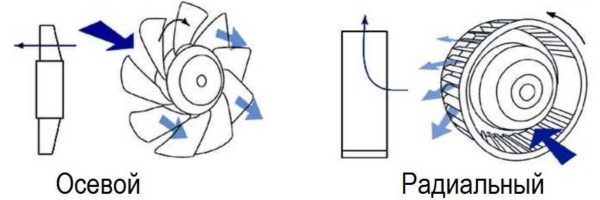
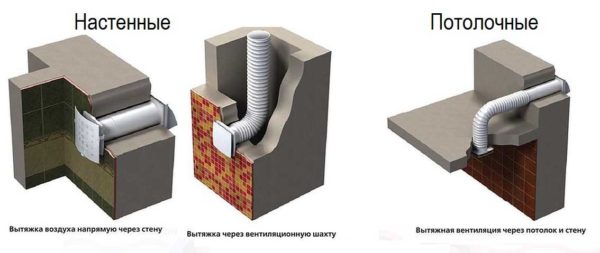
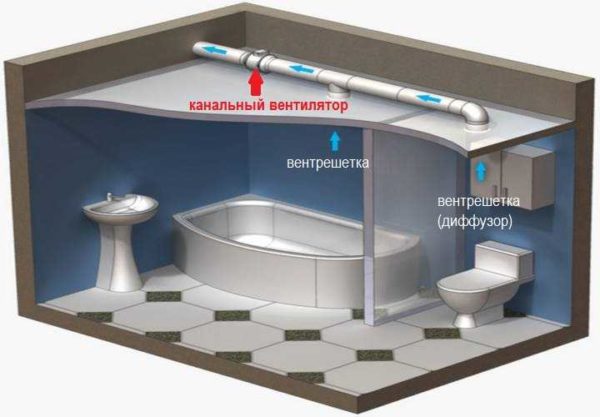
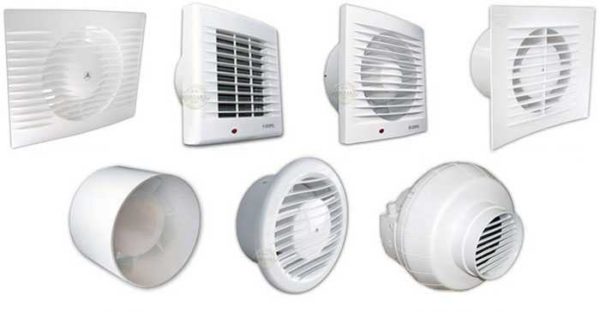

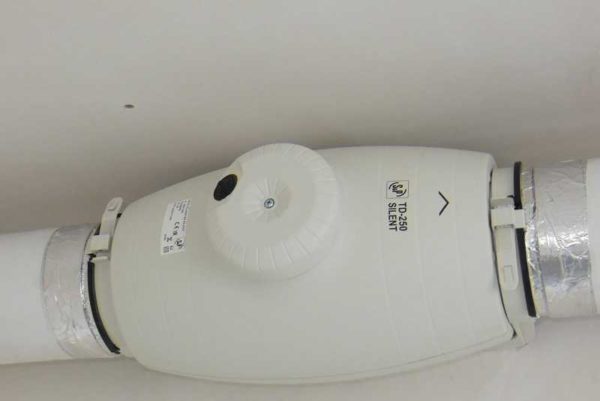
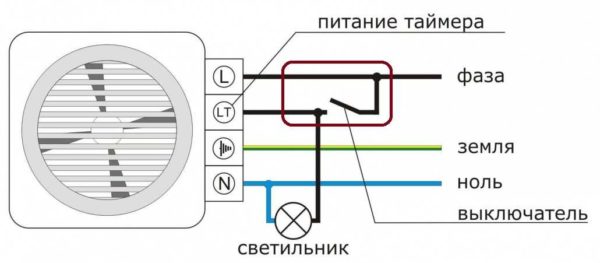
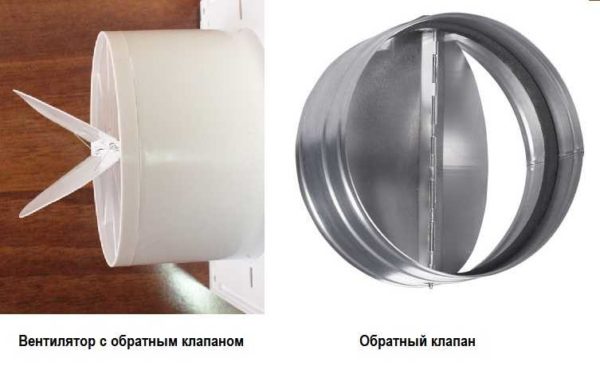

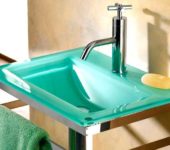
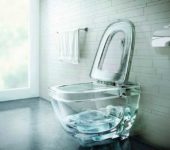

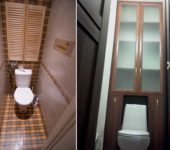





There is a new Domovent 150 S in the box, I thought to install it in a new apartment this year, but after watching the video I doubted. It turns out that Domoventy do not create the declared air flow. Initially, the doubts were not about the manufacturer, but about the size of 150 mm. The opening in the ventilation shaft is designed for a 100 mm fan. Most likely, I will be looking for Silent 100.